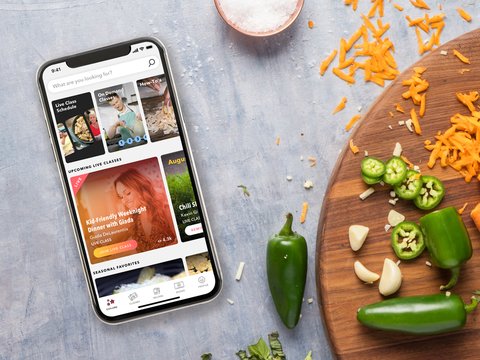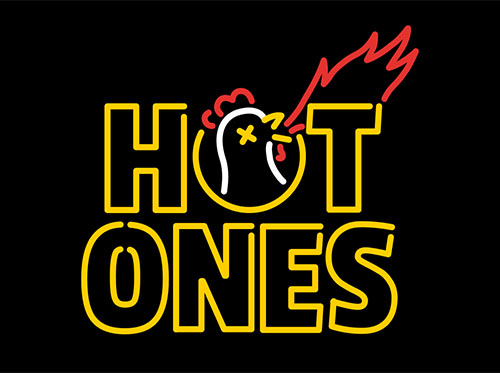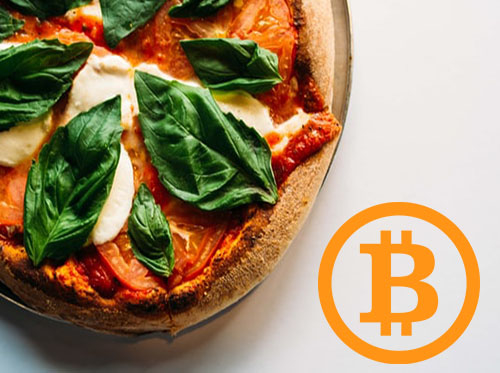The Future of Food & Beverage: When Will Manufacturers + Media Converge?
Traditional CPG is increasingly investing in, and acquiring, DTC.
Walmart’s partnership with Shopify. PepsiCo’s launch of Snacks.com and PantryShop.com. Haagen-Dazs’ geo delivery experiment and Hellman’s Best Recipes Alexa skill. Then there’s M&A including Coty and Kylie Cosmetics, Walmart and Jet.com, Unilever and Graze / Dollar Shave Club.
The list is long.
Media and DTC are also converging. It’s a two way street. Time Out’s internationals food halls. Complex Media’s Hot Ones hot sauce. The New York Times’ cooking app and Wirecutter acquisition. Online mag launches like Woolly by Casper and Here by Away. Community and UGC website The Recreationalist by Outdoor Voices. Blue Apron partnering with Chrissy Teigen for curated recipes.
And within media and DTC, the Food and Beverage (F&B) theme is dominant. The above convergence examples are just a sampling. We’ve covered numerous other F&B combinations in past blog posts (see here and here).
This got us thinking. What about the convergence of media and traditional F&B manufacturers? Think General Mills, Mondelez, Conagra, Kellogg’s, Hershey, Del Monte. A couple questions arise.
—-
Is the convergence already happening?
Unclear, though unlikely.
We at RockWater have a large dataset of activity amongst media brands and commerce. Product launches, online editorial initiatives, M&A, partnerships. We lack the same research for traditional F&B (though our analysts and MBA interns are now appropriately tasked). A few hours of research this AM didn’t produce much. This Mitsui and Tastemade partnership is one example.
Why unlikely?
We read a lot of media news and haven’t read about any major M&A developments here (we’re open to being proven wrong). Content initiatives by the traditional F&B brands are expected, and are happening. E.g. dedicated social media channels, influencer campaigns, and O&O content destinations. But, these initiatives are not happening at the relative scale of Digitally Native Vertical Brands (“DNVBs”) operating in F&B. Traditional F&B team headcount and marketing budgets for content is a fraction compared to that of DNVBs.
It’s a major strategic miss.
Also, media companies bring a different type of executive pedigree and know-how than a traditional F&B exec. Storytelling and dealmaking acumen vis-a-vis product merchandising and marketing strategy across user sub segments. But the skill gap is changing. Increasingly there’s experience and skill overlap in managing multi-channel marketing and distribution, optimizing user acquisition via paid and earned marketing, communicating brand values and product stories, engaging consumers, alternative distribution strategies, and more.
We believe the modern media executive would actually be a great F&B marketing exec.
What market challenges would be solved by the convergence of F&B manufacturing and media?
Discoverability.
Traditional F&B primarily relies on in-store discovery and TV campaigns. These traditional channels were optimized for a different competitive landscape, and are built upon longstanding partnerships with retailers and incumbent ad agencies. It’s who, and what, traditional F&B executives know. Channel and marketing innovation is happening, but slowly. And COVID is massively disrupting both retail foot traffic and in-store behavior. The disruption includes both temporary and permanent impacts.
Driving awareness of a new pasta sauce flavor because the best-selling SKU is sold out is a serendipitous win. And priority shelf placement does not deliver the revenue scale it used to. Traditional F&B brands need sustainable strategies. Their products need to be everywhere. Like modern media brands. Which find customers across multiple channels, all day every day. Modern media brands can even be brought in store, highlighted by this end cap featuring the High Noon Seltzer and Barstool Sports partnership.
Low online sales.
Nestle, the world’s largest packaged food manufacturer, drove 10% online sales as a percent of total sales for 1Q 2020. Unilever, representing one of the largest portfolios of food, household, and beauty products, had 8% for the same period. In contrast, L’Oreal had 20%. Overall, the beauty and cosmetics CPG category benefits from early adaptation to online buying behaviors (e.g. virtual try-on tech and video chat assistants). Online is where F&B consumers are spending, and at an accelerating rate. Media initiatives can help traditional F&B power ecommerce, and quickly.
Yes, F&B companies are acquiring digitally native and DTC food brands. But it’s an expensive strategy, and it will take time to meaningfully shift the online vs offline sales mix. Media strategies and systems can be tested and optimized within a few focus product brand groups. Upon success, these strategies can be deployed across a broad product portfolio, using centralized technology and team resources. Just like how Meredith and Hearst do it across their diversified media brand portfolios. This approach results in low marginal costs at scale, supplemented by the appropriate allocation of dedicated resources at the product brand level.
Communicating brand purpose.
Nextgen consumer brands win via good story. They have a compelling origin and stand for something. The stories can be personalized for different users, across different content channels, and from various compelling voices and personalities.
Traditional F&B manufacturers have products dating back decades, and even centuries. How is each product’s story being told? How is the story expanding to reach new customers? Narrowing to drive more share of wallet with brand loyalists? Evolving to new cultural norms and values? Recruiting forward-thinking employees to power new growth?
Customer listening.
Wholesalers and 3rd party retail channels add a lot of distance between traditional F&B brand and buyer. Now multiply that across a broad and diversified product portfolio, comprised of tens or even hundreds of products, and thousands of SKUs. Lots of missed data and purchasing insights. No bounce rates. No user reviews. Loyalty programs and retailer data capture only go so far.
We’re sweating just thinking about it.
Content gets you up close and personal with consumers. Publishers know immediately when they’re doing it right or doing it wrong. Views, opens, click-thrus, comments. These are rapid response metrics.
And what about key IRL senses like taste, touch, smell? In comes the power of media-powered community sharing and forums. User-generated content about taste likes and dislikes, new recipe ideas, storage recommendations, packaging aesthetic. Across multiple O&O and social media channels. Catalyzed by F&B social community managers and brand loyalists stoking discourse.
In-person focus groups and taste trials on hold due to COVID? No problem. F&B manufacturers are getting insights from consumers’ natural habitat. Even better.
The End?
No.
The potential for F&B manufacturer and media convergence raises many more questions, and customer-delighting ideas.
Questions like how to identify emergent F&B brands earlier for better M&A valuations and competition planning? How Food media can accelerate new product development? Will F&B CPG benefit from COVID? (We agree with the respondents in this survey from Mattson, a F&B innovation company. We’ve gotten to know their team over the past few months, and are big fans of their work).
And ideas like improved effectiveness of media and marketing dollars via content marketing’s multiplier effect. Curated product reviews from customers with similar profiles (i.e. others Moms in Savannah with toddlers) to promote new product trials. Enhanced personalization like notifications for SKU availability for your local store, including real time couponing for “inconvenience”.
We’ll continue raising the questions and navigating the answers. Our Food and Beverage manufacturer plus Media thesis has more behind it. But today’s newsletter is sufficient for our Tuesday Take. Which yes, got published on a Wednesday morning 😉
—
Ping us here at anytime. We love to hear from our readers.



